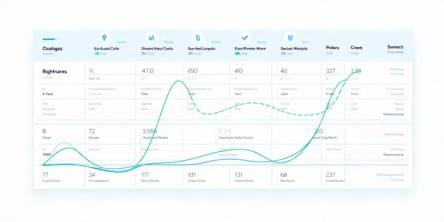Benefits and Use Cases of Serverless Architecture in Mobile App Development

In the ever-evolving landscape of app development, embracing innovation is not just a choice but a necessity. Enter serverless architecture, a transformative paradigm reshaping how we approach app development. Serverless Architecture is emerging as a paradigm that challenges traditional approaches to application development. Shedding the constraints of server management, this innovative framework promises scalability, cost-efficiency, and a streamlined development experience.
This article will focus on serverless architecture. I will explain what it means and its benefits with examples of how serverless architecture can be used for different purposes.
What Is Serverless Architecture?
Serverless is a modern and efficient way of building software applications in the cloud. It can be used for developing a cross-platform app for mobile devices. It frees developers from managing servers, hardware, and storage. Developers only need to write code, package it (usually in a container), and trigger it when needed. Serverless lets businesses pay for backend services from a provider based on usage and save money by paying only for the features used. It also lets developers write the functions they need for their app and let the provider run them. The function is then delivered to the client. Serverless also helps add new features to the system faster, reduces the development time, and allows programmers to focus on the app logic and code. It leads to quicker time to market. Serverless offers many benefits for startups and helps them launch their products faster.
Benefits Of Using Serverless In Mobile App Development
• Lower operational costs: Serverless architecture helps developers save money and time by removing the need to buy, set up, and manage servers. Developers only pay for the backend services they consume based on their usage. It cuts down the overhead and waste of resources. It allows developers to deploy and update code faster, as they do not have to deal with servers. This can accelerate the development cycle and reduce the time to launch the app. Developers can also update functions individually instead of editing a whole application at once, and there is no need to wait for users to download updates.
• Better user experience: Serverless platforms enhance user satisfaction by lowering latency and delivering responses almost instantly. They spread the backend services across multiple regions and locations, which can improve the app's performance for users in different geographies. It enables developers to deploy and update code quicker, as they do not have to manage servers. This can reduce the development cycle and shorten the time to launch the app. Developers can also update functions one by one instead of updating a whole application simultaneously, and users do not need to wait to install updates.
• Improved scalability: Serverless architecture boosts scalability and performance by automatically adjusting the backend services based on demand without requiring manual intervention. This can handle sudden changes in traffic and ensure the app’s reliability and availability. It also spreads the backend services across multiple regions and locations, lowering the latency and improving the app's performance for users in different geographies.
• Reduced latency: Serverless architecture lowers latency by executing application code from any location instead of a single source server. It means that the code can run nearer to the user, reducing the travel time and distance of the data. Serverless platforms, such as AWS Lambda @ Edge and Cloudflare Workers, spread the backend services across multiple regions and locations, improving the app's performance and reducing the latency for users in different geographies.
Use Cases For Serverless Architecture
Nordstrom
Nordstrom is a US-based department store chain that has embraced serverless architecture for some apps and experiments.
Some of the ways that Nordstrom is using serverless architecture are:
• Creating event-driven apps. Nordstrom has built apps based on individual events instead of data-driven apps. For example, they have created a “Recently Viewed” feature that shows customers what they viewed on the website or mobile app using serverless functions triggered by user actions.
• We are building an open-source retail store framework. Nordstrom has developed the Hello, Retail! Framework using serverless. This retail store framework is made using serverless as a proof-of-concept. Migration to AWS has helped Nordstrom to enhance user experience and overall performance.
• We are using serverless for media processing. Nordstrom has used serverless functions to perform tasks such as image resizing, video transcoding, or audio analysis on demand. For example, an upload event can trigger a serverless function to resize an image and store it in a cloud storage service.
Coca-Cola
The soft drink giant Coca-Cola adopted serverless technology for its vending machines in 2016. Every time someone buys a drink, the payment gateway contacts the AWS API Gateway and activates the AWS Lambda function to finish the transaction. The vending machine must communicate with the main office for stock and marketing purposes, and paying per request is more cost-effective than operating at total capacity.
Netflix
Netflix, an online content provider, can deliver its services globally without interruptions by using AWS. AWS allows Netflix to launch multiple servers and increase storage within minutes. Users can watch Netflix content from any location and device, including the web and smart devices.
Final Words
Serverless architecture is a software design approach that allows developers to create and run applications without handling servers, hardware, or storage. It provides many advantages for app development, such as cost-efficiency, scalability, elasticity, faster development speed, better resource utilization, and lower latency. Serverless architecture also enables the use of microservices and event-driven architecture, improving applications' flexibility and responsiveness. Serverless architecture is changing how businesses build and deploy their applications, helping them innovate quicker and more efficiently.
Similar Articles
Modern businesses are drowning in communication overload, and much of that burden stems from outdated tools that simply can’t keep up
Building lending software isn’t just a technical project—it’s a business decision. Whether you're a fintech founder or part of a traditional lending institution trying to go digital, three questions will shape everything that follows
Learn why robust security is crucial for super app development. Explore key strategies and best practices for mobile app development security.
Walkie-talkies with an extensive reception capacity have changed significantly when it comes to portable communication by displaying cutting-edge features with seamless connectivity that covers more than just the state
USB-C technology has revolutionized the way we charge our devices, offering faster charging speeds, higher power delivery, and universal compatibility across multiple devices
Discover expert mobile app development strategies to create a viral app that attracts users and boosts engagement
Optimize app localization for iOS users across the EU with language, cultural, and regulatory adaptations. Engage users and boost retention with these tips!
Discover the top 10 mobile app development trends of 2024! Explore 5G, AI, AR/VR, blockchain, and more to stay ahead in the ever-evolving app development landscape.
With its triple-lens design and fantastic photo and video quality, the iPhone 11 Pro Max is extensively acknowledged for its superior camera system. But problems can occur with also one of the most advanced technologies. If you're having issues with the iPhone 11 pro max camera lens, knowing the typical problems and how to repair them









